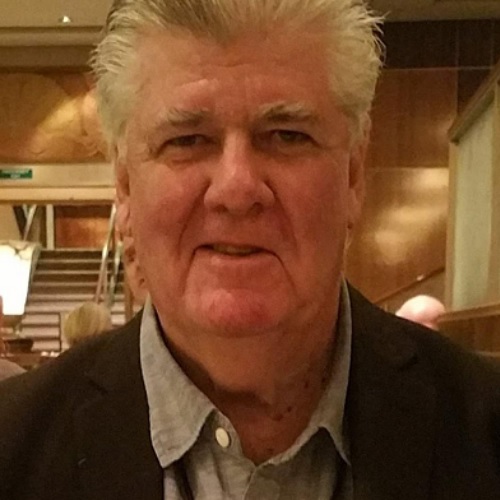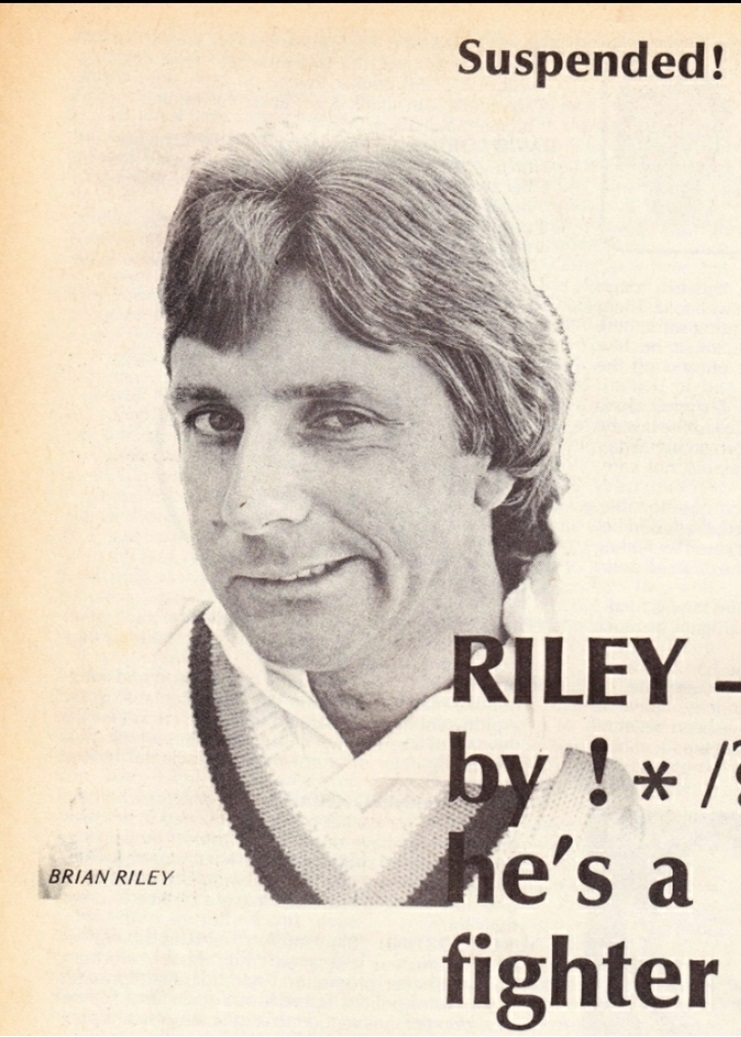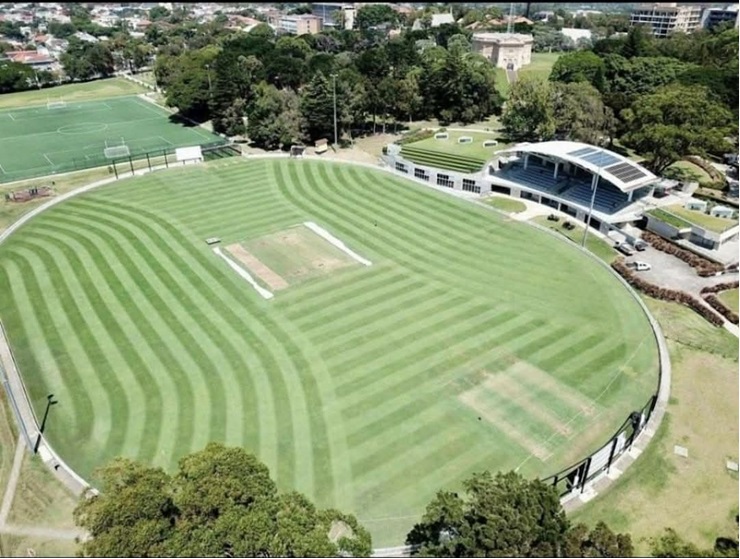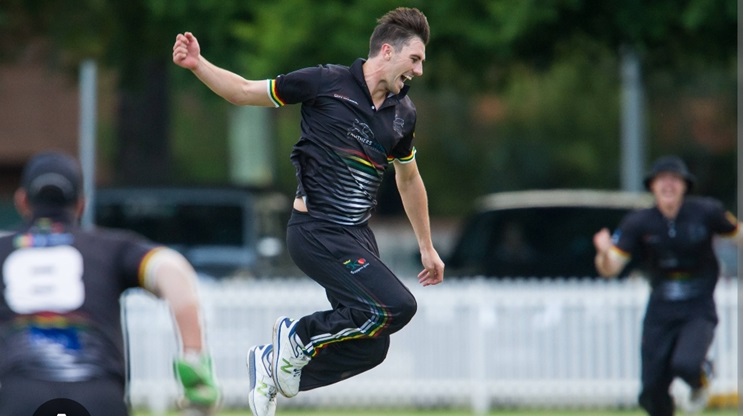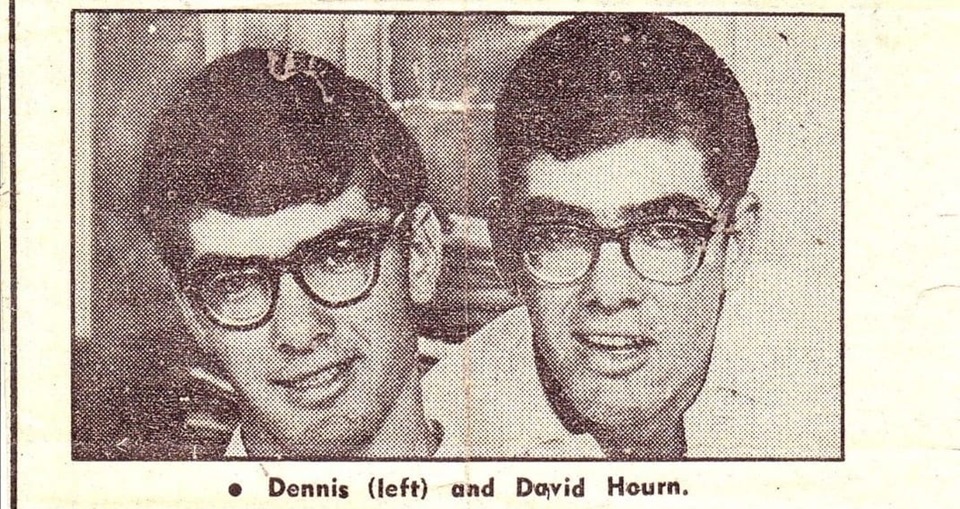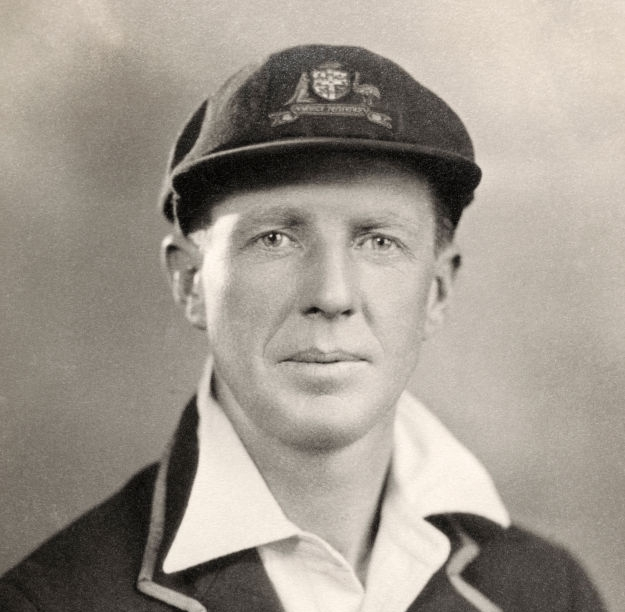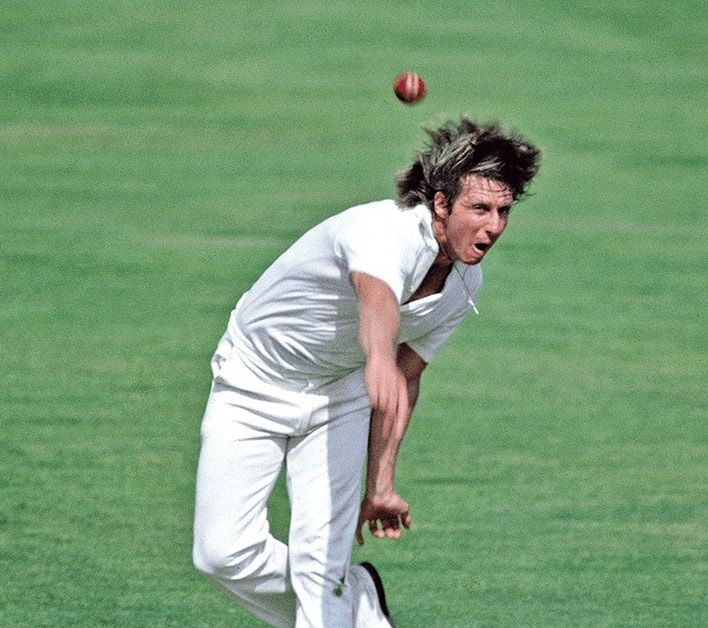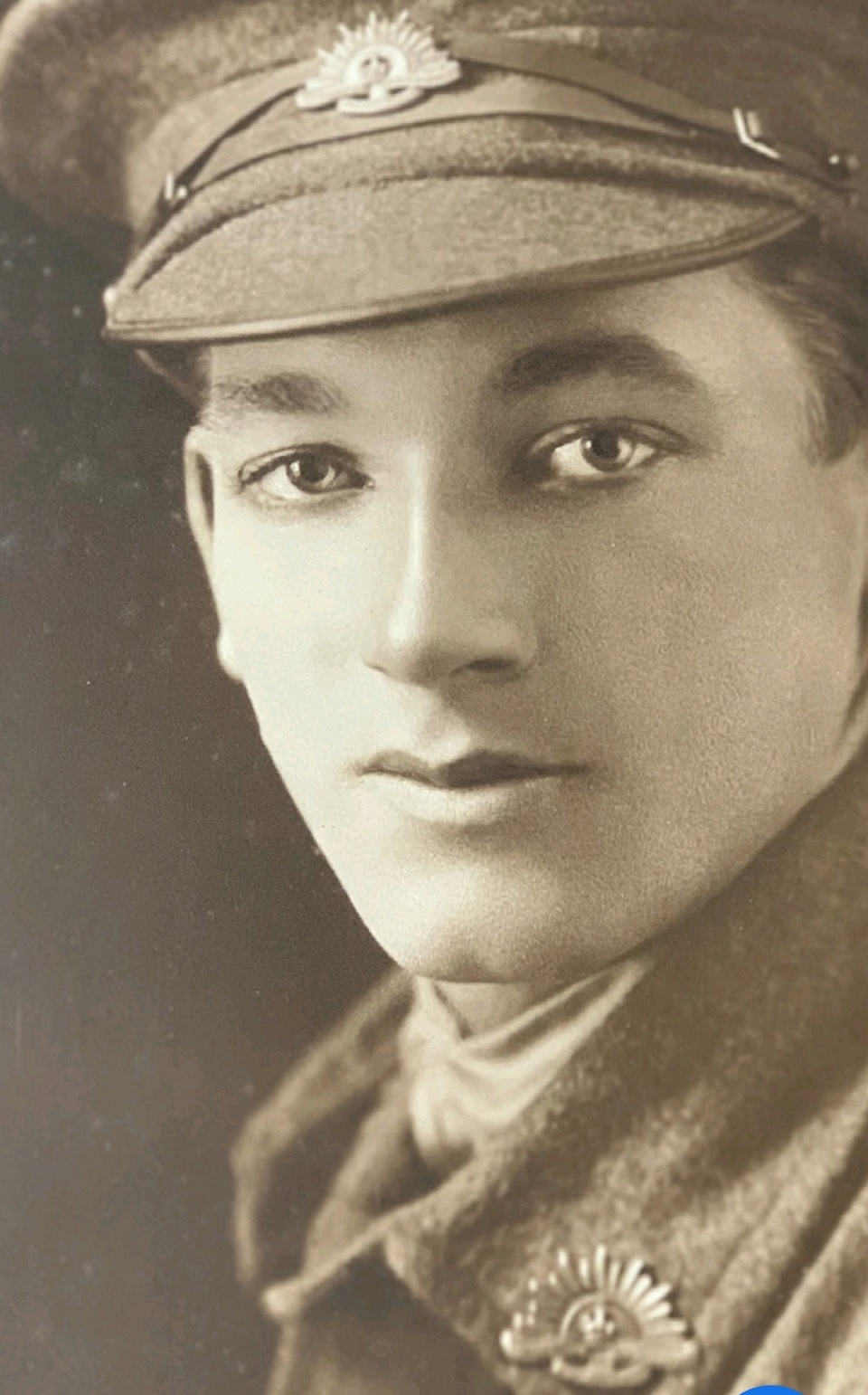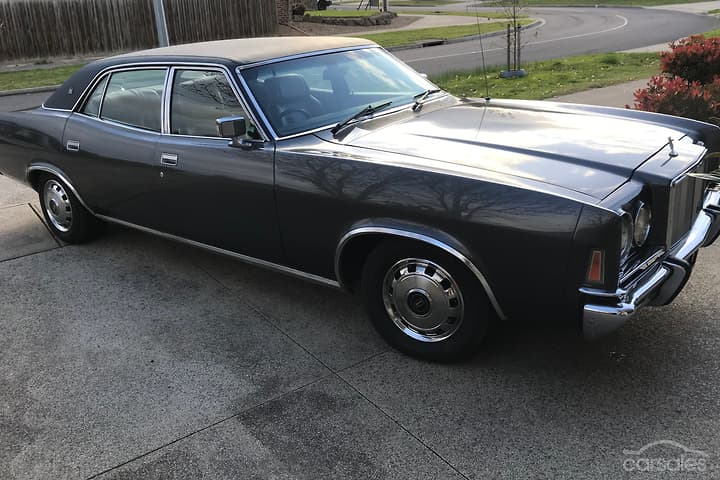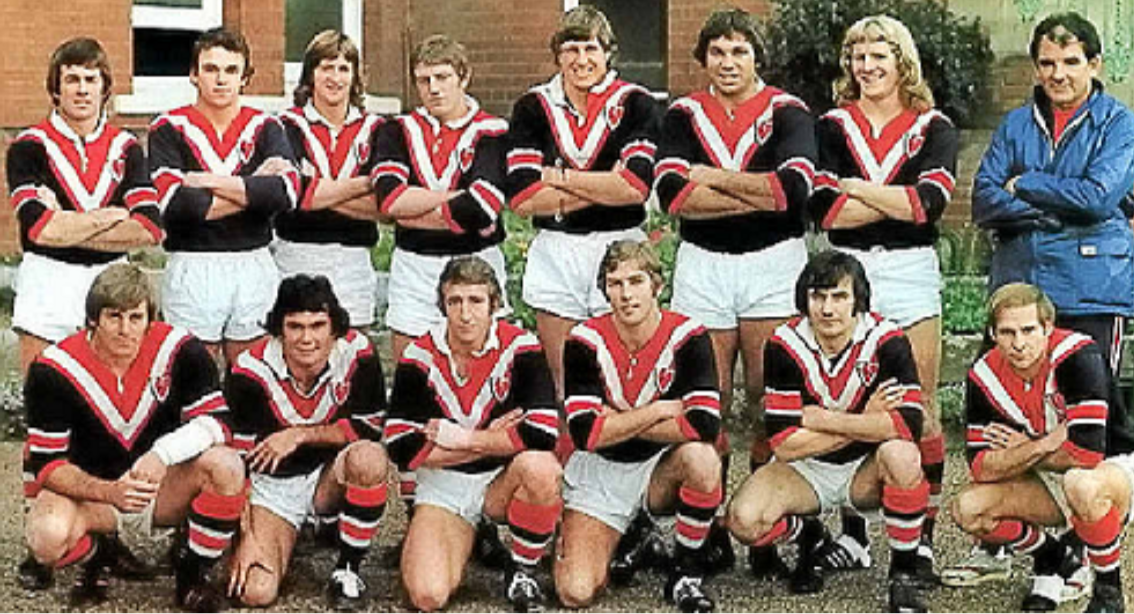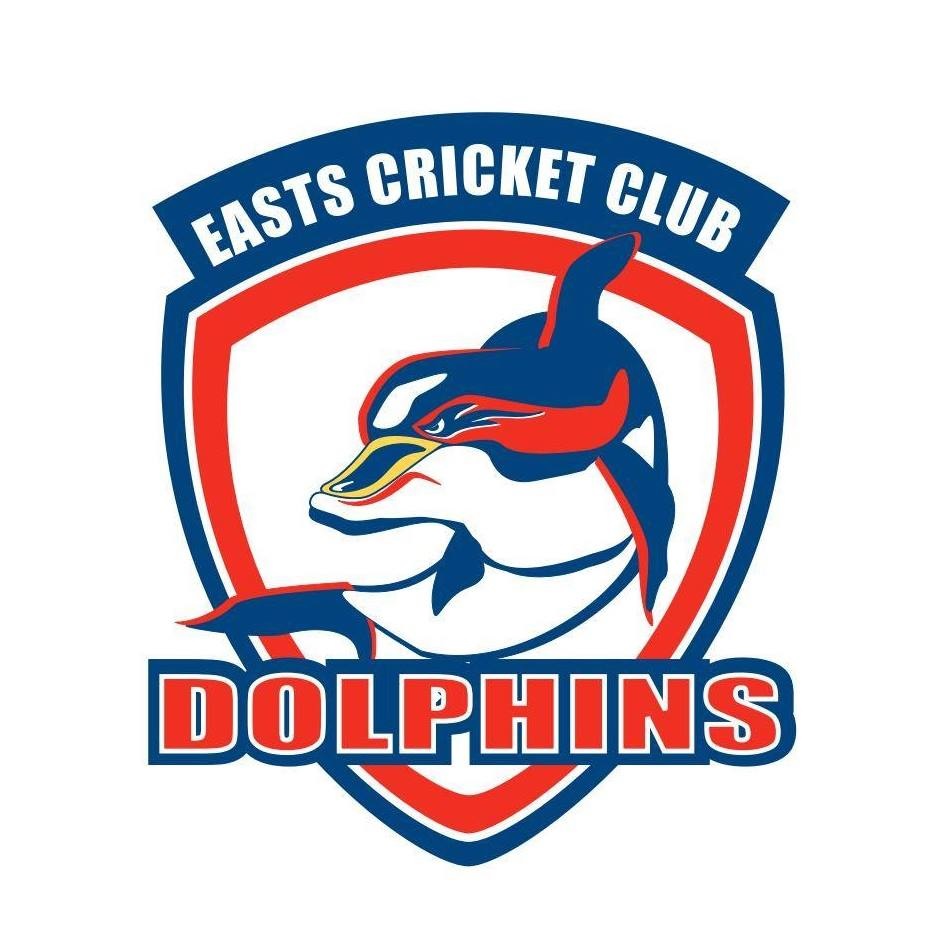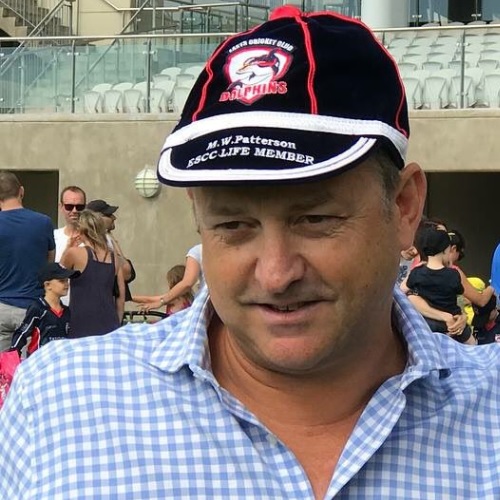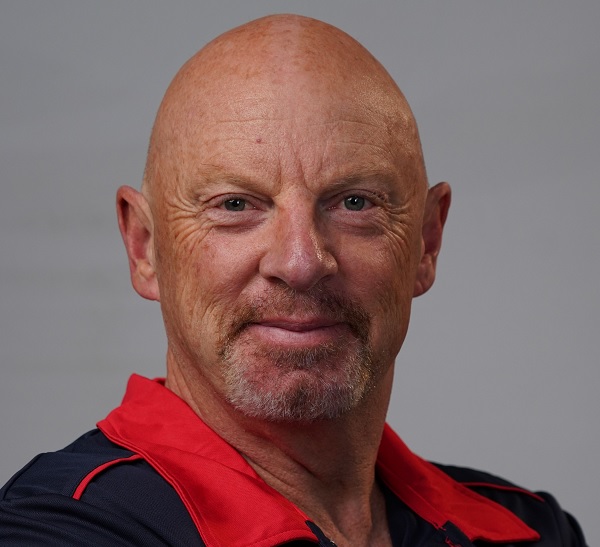About Me
Partner Sponsors
My Activity
question
Q: It's Waverley Oval 1979 and Waverley is pitched against UNSW. Brian Riley is playing for Waverley having decamped from Petersham. He's had a pretty lean season with 220 runs from 11 digs for his new club and finds himself in second grade for the first time in a decade. It's the second last game of the season and the Waverley second grade team too has had a lean season.
Riles arrives late. We are fielding in a few minutes. He is frantically rooting around in his kit bag and then lets out a flurry of expletives. Manages to cover just about every expletive known to the English language. "I've left my f...... cricket trousers at home" he screams. Inquires of his new team mates if we have any spares. No luck.
Riles arrives late. We are fielding in a few minutes. He is frantically rooting around in his kit bag and then lets out a flurry of expletives. Manages to cover just about every expletive known to the English language. "I've left my f...... cricket trousers at home" he screams. Inquires of his new team mates if we have any spares. No luck.
https://www.cricconnect.com/profile/239/dennis-hourn/blog/2651/brian-riley-the-quotenfant-terriblequot-of-sydney-grade-cricket-in-the-1970s
blog post
It's Waverley Oval 1979 and Waverley is pitched against UNSW. Brian Riley is playing for Waverley having decamped from Petersham. He's had a pretty lean season with 220 runs from 11 digs for his n ...
question
Q: A stunning video has just been released on the history and use of Sydney's Waverley Park which includes Waverley Oval, the grandstand and its facilities, the all weather playing fields, children's playground and the imposing water reservoir tower.
Waverley Oval is home to the Eastern Suburbs Cricket Club formerly known as Waverley District Cricket Club. The club has a rich 150 year history as club president Jim Maxwell AM outlines in the video. Past players include test players and former Australian test captain Syd Gregory, Alan Kippax, former England test captain Tony Greig, Geoff Boycott, Malcolm Marshall, Greg Matthews, Brad Haddin, Peter Nevill and David Warner.
Waverley Oval is home to the Eastern Suburbs Cricket Club formerly known as Waverley District Cricket Club. The club has a rich 150 year history as club president Jim Maxwell AM outlines in the video. Past players include test players and former Australian test captain Syd Gregory, Alan Kippax, former England test captain Tony Greig, Geoff Boycott, Malcolm Marshall, Greg Matthews, Brad Haddin, Peter Nevill and David Warner.
https://www.cricconnect.com/profile/239/dennis-hourn/blog/2650/our-park-waverley-park
blog post
A stunning video has just been released on the history and use of Sydney's Waverley Park which includes Waverley Oval, the grandstand and its facilities, the all weather playing fields, children's ...
answered
Q: Who is the fastest bowler you’ve ever faced in a game of cricket?
A: The first time I saw Jeff Thomson bowling in grade cricket was a game against Bankstown at Waverley Oval around 1972. Also got to face him as a lower order bat.
We batted first and of course in those days we only turned up 20 minutes before the start of the game. We won the toss. Elected to bat and thought we would be in for a leisurely day getting over the previous night's festivities.
Lenny Richardson, later to play for NSW and Queensland, was opening the batting and took strike. Ian Gorman was the keeper and Thommo marks his run up. Right to the edge of the southern practice wickets. About 40 metres.
There would have been nearly 100 metres between Thommo at the top of his run up and Gorman, who was planted not far from the northern practice wickets. Len must have felt a little lonely out there.
We thought. This is bullshit. On Waverley Oval. This bloke is having a lend of us. We had heard rumours about how quick Thommo was, mainly from a David Lord article in the old Sunday Mirror who quoted ex England player Barry Knight who said about Thommo "fastest bowler he had ever faced". But we thought that was just paper talk. How wrong we were and Lordie had nailed it.
First ball. I remember it like yesterday. Thommo bounded in and let fly. It whistled past Len's face and Gorman took it on the rise. It was just a blur. But very intimidating. We all immediately put our papers down and thought this is going to be very interesting.
Which it was.
Thommo was all fired up pushing for state selection at the time. Coming from the Birrell Street end, with the southerly behind him, if he didn't hit 100 mph that day nearly every ball, I'm not here. He absolutely demolished us and took seven wickets.
It is without doubt the fastest bowling in 60 years at Waverley Oval I can ever recall. Next quickest was Malcolm Marshall, semi final against Randwick 1992 and third Patrick Cummins 2008 second grade playing for Penrith.
But Thommo was really the only bowler I remember at Waverley Oval who you couldn't pick up the ball watching side on. So in my books the quickest.
Sent from my Galaxy
We batted first and of course in those days we only turned up 20 minutes before the start of the game. We won the toss. Elected to bat and thought we would be in for a leisurely day getting over the previous night's festivities.
Lenny Richardson, later to play for NSW and Queensland, was opening the batting and took strike. Ian Gorman was the keeper and Thommo marks his run up. Right to the edge of the southern practice wickets. About 40 metres.
There would have been nearly 100 metres between Thommo at the top of his run up and Gorman, who was planted not far from the northern practice wickets. Len must have felt a little lonely out there.
We thought. This is bullshit. On Waverley Oval. This bloke is having a lend of us. We had heard rumours about how quick Thommo was, mainly from a David Lord article in the old Sunday Mirror who quoted ex England player Barry Knight who said about Thommo "fastest bowler he had ever faced". But we thought that was just paper talk. How wrong we were and Lordie had nailed it.
First ball. I remember it like yesterday. Thommo bounded in and let fly. It whistled past Len's face and Gorman took it on the rise. It was just a blur. But very intimidating. We all immediately put our papers down and thought this is going to be very interesting.
Which it was.
Thommo was all fired up pushing for state selection at the time. Coming from the Birrell Street end, with the southerly behind him, if he didn't hit 100 mph that day nearly every ball, I'm not here. He absolutely demolished us and took seven wickets.
It is without doubt the fastest bowling in 60 years at Waverley Oval I can ever recall. Next quickest was Malcolm Marshall, semi final against Randwick 1992 and third Patrick Cummins 2008 second grade playing for Penrith.
But Thommo was really the only bowler I remember at Waverley Oval who you couldn't pick up the ball watching side on. So in my books the quickest.
Sent from my Galaxy
answered
Q: A Milestone in NSW Cricket: Steve Rixon and Peter Toohey Celebrating 50 Years
Two great mates, born just 55 days and 417 kilometres apart in regional NSW, made their first-class debut for New South Wales on this day, 50 years ago—October 25, 1974.
Steve Rixon, hailing from Albury, and Peter Toohey, from Blayney, donned the iconic NSW Baggy Blue for the first time, facing Queensland at the Gabba. Though NSW fell short, losing by 9 wickets, the game marked the beginning of two remarkable careers that would soon rise above the early setback. Both Rixon and Toohey went on to represent Australia at the highest level—Test cricket.
Their shared journey extended beyond state cricket, as both men played together at Western Suburbs District Cricket Club in Sydney. In an extraordinary twist, they even made their Test debuts side by side, both taking the field for Australia against India at the Gabba during the first Test of the 1977-78 series.
This time, their fortunes were much brighter. Rixon (Australian player number 287) made his mark behind the stumps with 5 catches, while Toohey (Australian player number 288) impressed with the bat, scoring 82 and 57, helping Australia to a 16-run victory.
Cricket brought Rixon and Toohey together and fifty years later, we look back with admiration on the achievements of these two great mates.
Two great mates, born just 55 days and 417 kilometres apart in regional NSW, made their first-class debut for New South Wales on this day, 50 years ago—October 25, 1974.
Steve Rixon, hailing from Albury, and Peter Toohey, from Blayney, donned the iconic NSW Baggy Blue for the first time, facing Queensland at the Gabba. Though NSW fell short, losing by 9 wickets, the game marked the beginning of two remarkable careers that would soon rise above the early setback. Both Rixon and Toohey went on to represent Australia at the highest level—Test cricket.
Their shared journey extended beyond state cricket, as both men played together at Western Suburbs District Cricket Club in Sydney. In an extraordinary twist, they even made their Test debuts side by side, both taking the field for Australia against India at the Gabba during the first Test of the 1977-78 series.
This time, their fortunes were much brighter. Rixon (Australian player number 287) made his mark behind the stumps with 5 catches, while Toohey (Australian player number 288) impressed with the bat, scoring 82 and 57, helping Australia to a 16-run victory.
Cricket brought Rixon and Toohey together and fifty years later, we look back with admiration on the achievements of these two great mates.
A: Fond memories of both. Here are two
1. In a redraw game in 1974 we are playing against Bankstown. Last game of the season. We win the toss and elect to bowl. I'm sitting in the dressing room intrigued that Stumper hasn't put the pads on. He tells me he's opening the bowling with me. The wicket-keeper for the day is to be Phil Alterator who happens to be the president's son. He would rank as perhaps the luckiest keeper ever to grace first grade given the presence of Stumper. But hey he's the pres's son.
Stumper who was vying for a state spot at the time was not impressed.
For the record Stumper hot 2/23 with his dinky medium pacers.
2. Peter Toohey. I had the misfortune to bowl to him towards the tail end of my first grade career. Hadn't bowled to him before. I wasn't really fired up for the game as I realised I was heading down the grades.
I opened to Peter. Second or third ball sails over the southern scoreboard. He actually takes the sword to me. I retire to the deep fine boundary to watch him reel off a devastating century. I think to myself that yes maybe next week I'll be shaking hands with the second grade captain.
1. In a redraw game in 1974 we are playing against Bankstown. Last game of the season. We win the toss and elect to bowl. I'm sitting in the dressing room intrigued that Stumper hasn't put the pads on. He tells me he's opening the bowling with me. The wicket-keeper for the day is to be Phil Alterator who happens to be the president's son. He would rank as perhaps the luckiest keeper ever to grace first grade given the presence of Stumper. But hey he's the pres's son.
Stumper who was vying for a state spot at the time was not impressed.
For the record Stumper hot 2/23 with his dinky medium pacers.
2. Peter Toohey. I had the misfortune to bowl to him towards the tail end of my first grade career. Hadn't bowled to him before. I wasn't really fired up for the game as I realised I was heading down the grades.
I opened to Peter. Second or third ball sails over the southern scoreboard. He actually takes the sword to me. I retire to the deep fine boundary to watch him reel off a devastating century. I think to myself that yes maybe next week I'll be shaking hands with the second grade captain.
question
Q: I race over to our scorer and immediately inquire "Who is this kid?". The nearby Penrith scorer obliges and says "That's Patrick Cummins. He's quick isn't he". That was a statement of the obvious.
The second ball thunders into Lee Kirk's pad. Lee had barely time to raise his bat and must have been perilously close to be given out. But he survives. Much to the annoyance of the fielding side from whom he cops a bit of a spray. But Patrick doesn't say a word of dissent. Just goes about his business. Bowling fast.
The second ball thunders into Lee Kirk's pad. Lee had barely time to raise his bat and must have been perilously close to be given out. But he survives. Much to the annoyance of the fielding side from whom he cops a bit of a spray. But Patrick doesn't say a word of dissent. Just goes about his business. Bowling fast.
https://www.cricconnect.com/profile/239/dennis-hourn/blog/2373/a-champion-emerges-pat-cummins
blog post
It is very evident to the trained eye when you know you are watching a special talent. It happened as such for players and followers of Eastern Suburbs (Waverley) Cricket Club on one overcast after ...
question
Q: John, after due consideration, says Dennis you'll be opening on Saturday. You beauty, I think. I can't sleep I'm that excited. Turn up at Jensen Park all decked out ready to plunder the hapless Bankstown attack.
But there's a problem. A big problem. A massive problem. The opening bowlers for Bankstown are Jeffrey Robert Thomson and Len Pascoe nee Durtanovich. All of 15 years old and all fired up. No bouncer rules, no helmets, wafer thin thigh guard and pads that you may as well had the SMH wrapped around your legs.
But there's a problem. A big problem. A massive problem. The opening bowlers for Bankstown are Jeffrey Robert Thomson and Len Pascoe nee Durtanovich. All of 15 years old and all fired up. No bouncer rules, no helmets, wafer thin thigh guard and pads that you may as well had the SMH wrapped around your legs.
https://www.cricconnect.com/profile/239/dennis-hourn/blog/2361/my-welcome-to-grade-cricket-ndash-another-len-pascoe-and-jeff-thomson-story
blog post
To my cricket friends I was recently asked to write an article for the Waverley College old boys magazine on Dave and I. It got me thinking. One thing that came to mind was the unbelievable ...
question
Q: Ken Thorpe had dreams of his son Ian treading in his first grade cricket footsteps. Ken, who played for Bankstown in the Sydney competition with fiery Test speedsters Jeff Thomson and Lenny Pascoe, was a middle order batsman who took a ton of shifting, his defence was so tight.
I played against him for years.
He was known as a “nurdler”, hardly knocking the ball off the square. When the scoreboard showed he had 40 runs against his name, you wondered how he got there.
He was a prize scalp.
Ian was six when Ken took him to renowned cricket coach David Hourne, better known as “Cracker”.
It took just seconds to “Cracker’s” discerning eye that Ian had precious little ball sense, and wasn’t well co-ordinated: two vital necessities to make it in cricket.
Wondering how he was going to break the bad news to his cricket-mad Dad, “Cracker” asked if Ian played any other sports.
“Oh, he’s showing some interest in swimming,” was Ken’s reply.
Quick as a flash “Cracker” suggested to Ken it would be a good idea to foster that interest.
Fostering a swimming interest in Ian Thorpe had to be the understatement of a lifetime.
The rest, as we all know, is history.
Originally published on The Roar by David Lord former Mosman Cricket Club first grade cricketer -
I played against him for years.
He was known as a “nurdler”, hardly knocking the ball off the square. When the scoreboard showed he had 40 runs against his name, you wondered how he got there.
He was a prize scalp.
Ian was six when Ken took him to renowned cricket coach David Hourne, better known as “Cracker”.
It took just seconds to “Cracker’s” discerning eye that Ian had precious little ball sense, and wasn’t well co-ordinated: two vital necessities to make it in cricket.
Wondering how he was going to break the bad news to his cricket-mad Dad, “Cracker” asked if Ian played any other sports.
“Oh, he’s showing some interest in swimming,” was Ken’s reply.
Quick as a flash “Cracker” suggested to Ken it would be a good idea to foster that interest.
Fostering a swimming interest in Ian Thorpe had to be the understatement of a lifetime.
The rest, as we all know, is history.
Originally published on The Roar by David Lord former Mosman Cricket Club first grade cricketer -
https://www.theroar.com.au/2011/11/03/how-thorpey-swapped-a-baggy-green-for-some-swimming-trunks
/question
Q: The enigmatic Brian Riley was a colourful character of Sydney Grade Cricket in the late 60s, 70s and 80s.
Tom Brooks was a Cricket umpire who stood in 23 Test matches and had previously played 16 first-class games as a fast bowler for New South Wales..
Together they didn’t get along. Riles feud with Tom Brookes started around 1969 and continued throughout much of Riles's grade career and here's how it happened:
In a Poidevin Gray game played at Waverley Oval circa 1969, Petersham was batting and Riles was at the crease facing seamer and great medium pacer Dave Gibson. It was an overcast day, Tom Brookes, test umpire was officiating and Gibbo was steaming in from the scoreboard end of the ground.
Gibbo sends down a shortish ball to Riles, Riles tries to play a forcing shot off the back foot, Gibbo makes a half-hearted appeal, not supported by anyone else on the ground, and Tom Brookes raises the finger and gives Riles out.
Riles immediately says to Tom in his inimitable style – “Tom you are f#@**$! kidding!!”.
Instead of then walking off to the pavilion via point he proceeds slowly down the middle of the pitch towards Tom Brookes. Everyone on the field is waiting with bated breath; is he going to hit Tom, swing a bat at him or what. Riles's reputation has preceded him.
None of that – when Riles gets within reach of Tom, Riles takes of his rim glasses and places them on Tom Brookes head with the comment. “Take these Tom, you f#@**$! need them more than me”.
With that Riles storms of the pitch swearing and cursing all the way to the grandstand. Vintage Brian Riley but he was only 20 at the time and a lot more umpires were to incur the wrath of Brian Riley over the ensuing years.
Tom Brooks was a Cricket umpire who stood in 23 Test matches and had previously played 16 first-class games as a fast bowler for New South Wales..
Together they didn’t get along. Riles feud with Tom Brookes started around 1969 and continued throughout much of Riles's grade career and here's how it happened:
In a Poidevin Gray game played at Waverley Oval circa 1969, Petersham was batting and Riles was at the crease facing seamer and great medium pacer Dave Gibson. It was an overcast day, Tom Brookes, test umpire was officiating and Gibbo was steaming in from the scoreboard end of the ground.
Gibbo sends down a shortish ball to Riles, Riles tries to play a forcing shot off the back foot, Gibbo makes a half-hearted appeal, not supported by anyone else on the ground, and Tom Brookes raises the finger and gives Riles out.
Riles immediately says to Tom in his inimitable style – “Tom you are f#@**$! kidding!!”.
Instead of then walking off to the pavilion via point he proceeds slowly down the middle of the pitch towards Tom Brookes. Everyone on the field is waiting with bated breath; is he going to hit Tom, swing a bat at him or what. Riles's reputation has preceded him.
None of that – when Riles gets within reach of Tom, Riles takes of his rim glasses and places them on Tom Brookes head with the comment. “Take these Tom, you f#@**$! need them more than me”.
With that Riles storms of the pitch swearing and cursing all the way to the grandstand. Vintage Brian Riley but he was only 20 at the time and a lot more umpires were to incur the wrath of Brian Riley over the ensuing years.
answered
Q: On Saturday 2 September 1939 a testimonial game was played at Waverley Oval for Alan Kippax.
https://www.cricconnect.com/profile/239/dennis-hourn/blog/2190/alan-kippax-testimonial-game-in-1939-at-waverley-oval
A:
https://vimeo.com/577896323
question
Q: On Saturday 2 September 1939 a testimonial game was played at Waverley Oval for Alan Kippax.
https://www.cricconnect.com/profile/239/dennis-hourn/blog/2190/alan-kippax-testimonial-game-in-1939-at-waverley-oval
blog post
On Saturday 2 September 1939 a testimonial game was played at Waverley Oval for Alan Kippax. ...
question
Q: It's 1975 and Tony Grieg, Waverley's captain, conspires with the players from the opposing team, Randwick, to play a trick on a fieldsman in the gloom of a Rothman’s Knock Out limited over match at Waverley Oval.
Tony bowls, the Randwick batsman Billy Knowles hooks and Tony screams to the visually challenged fieldsman who is fielding in the dark at deep fine leg, “Hournie Catch it, Catch it”. Hournie of course runs around in circles looking for the ball but it can’t be seen. At least by Hournie.
After an agonising twenty or so seconds and a fruitless search for the ball Hournie looks up and sees Greigy sitting on the pitch laughing his head off holding the ball up in the air.
The crowd and opposing team are also laughing because Greigy had cooked up a
scheme to bowl a “dummy” and for the batsman to play a ‘dummy’ hook shot. Everyone was in on the act except Hournie.
Tony dined out on that at many Waverley functions for years after.
Tony bowls, the Randwick batsman Billy Knowles hooks and Tony screams to the visually challenged fieldsman who is fielding in the dark at deep fine leg, “Hournie Catch it, Catch it”. Hournie of course runs around in circles looking for the ball but it can’t be seen. At least by Hournie.
After an agonising twenty or so seconds and a fruitless search for the ball Hournie looks up and sees Greigy sitting on the pitch laughing his head off holding the ball up in the air.
The crowd and opposing team are also laughing because Greigy had cooked up a
scheme to bowl a “dummy” and for the batsman to play a ‘dummy’ hook shot. Everyone was in on the act except Hournie.
Tony dined out on that at many Waverley functions for years after.
question
Q: Let me tell you about the first time I saw Jeff Thomson bowling in grade cricket. It was a game against Bankstown at Waverley Oval around 1972.
We batted first and of course in those days we only turned up 20 minutes before the start of the game. We won the toss. Elected to bat and thought we would be in for a leisurely day getting over the previous night's festivities.
Lenny Richardson, later to play for NSW and Queensland, was opening the batting and took strike. Ian Gorman was the keeper and Thommo marks his run up. Right to the edge of the southern practice wickets. About 40 metres.
There would have been nearly 100 metres between Thommo at the top of his run up and Gorman, who was planted not far from the northern practice wickets.
We thought. On Waverley Oval. This bloke is having a lend of us.
We batted first and of course in those days we only turned up 20 minutes before the start of the game. We won the toss. Elected to bat and thought we would be in for a leisurely day getting over the previous night's festivities.
Lenny Richardson, later to play for NSW and Queensland, was opening the batting and took strike. Ian Gorman was the keeper and Thommo marks his run up. Right to the edge of the southern practice wickets. About 40 metres.
There would have been nearly 100 metres between Thommo at the top of his run up and Gorman, who was planted not far from the northern practice wickets.
We thought. On Waverley Oval. This bloke is having a lend of us.
https://www.cricconnect.com/profile/239/dennis-hourn/blog/1787/jeff-thomson-frightening-pace
blog post
Let me tell you about the first time I saw Jeff Thomson bowling in grade cricket. It was a game against Bankstown at Waverley Oval around 1972. ...
question
Q: Nellie Gregory organised the first women's cricket match in Australia in March 1886.
Nellie Gregory was the sister of Syd and Charles Gregory. Syd was to captain Australia and played 58 tests and Charles, at one stage, held the record for the highest first class score on Australia of 383. They were outstanding cricketers and prolific run scorers for the Eastern Suburbs (Waverley) Cricket Club.
Nellie's father Ned Gregory played test cricket and was the first curator of the Sydney Cricket Ground. The family lived on the SCG so Nellie and her three sisters, who were also cricket pioneers, had the perfect backyard in which to hone their cricket skills. Not surprisingly that's where the game in 1886 was played.
Nellie, despite being a talented cricketer, had to withstand a great deal of criticism, bordering on ridicule, to get women's cricket established in the colony. A lesser person would have given up, but she stuck to her guns and continued her involvement with cricket for decades.
The photo of Nellie attached shows a very determined young woman, certainly not one to be messed with. Those steely eyes must have sent shivers through even her harshest critic.
Nellie Gregory was the sister of Syd and Charles Gregory. Syd was to captain Australia and played 58 tests and Charles, at one stage, held the record for the highest first class score on Australia of 383. They were outstanding cricketers and prolific run scorers for the Eastern Suburbs (Waverley) Cricket Club.
Nellie's father Ned Gregory played test cricket and was the first curator of the Sydney Cricket Ground. The family lived on the SCG so Nellie and her three sisters, who were also cricket pioneers, had the perfect backyard in which to hone their cricket skills. Not surprisingly that's where the game in 1886 was played.
Nellie, despite being a talented cricketer, had to withstand a great deal of criticism, bordering on ridicule, to get women's cricket established in the colony. A lesser person would have given up, but she stuck to her guns and continued her involvement with cricket for decades.
The photo of Nellie attached shows a very determined young woman, certainly not one to be messed with. Those steely eyes must have sent shivers through even her harshest critic.
question
Q: To me the whole test was pretty disappointing. Started by Australia with a barrage of short, pitched bowling in England's second dig. Then England's 98% of balls pitched in their half of the wicket. What were the umps thinking? Perhaps they weren't.
Starc's catch. Has been out for 150 years. Third umpire I reckon spooked by previous Green and Smith controversies. If Starc had have thrown the ball in the air immediately after catching? Out. End of section.
Bairstow run out. Well, he clearly wasn't attempting a run. Technically out. A variation on a Mankad. Brain fade from Bairstow. But the fact is keepers have been throwing down stumps since day 1. Much to the annoyance of square umpires.
Then the Stokes "I've got the shits" innings. 20/20 comes to test cricket.
But by far the most disappointing was the heckling and abuse by Lord's members of the Australian team in the Long Room. One of the most iconic scenes in world sport is to see players make their way to the dressing room via The Long Room under photographs of the greats being clapped by the members. That may well now be a thing of the past.
This test is going to be remembered for all the wrong reasons.
Starc's catch. Has been out for 150 years. Third umpire I reckon spooked by previous Green and Smith controversies. If Starc had have thrown the ball in the air immediately after catching? Out. End of section.
Bairstow run out. Well, he clearly wasn't attempting a run. Technically out. A variation on a Mankad. Brain fade from Bairstow. But the fact is keepers have been throwing down stumps since day 1. Much to the annoyance of square umpires.
Then the Stokes "I've got the shits" innings. 20/20 comes to test cricket.
But by far the most disappointing was the heckling and abuse by Lord's members of the Australian team in the Long Room. One of the most iconic scenes in world sport is to see players make their way to the dressing room via The Long Room under photographs of the greats being clapped by the members. That may well now be a thing of the past.
This test is going to be remembered for all the wrong reasons.
answered
Q: Mosman defeated Sutherland in the 1985-86 4th Grade final at Kensington Oval, played on Easter Saturday & Easter Monday 1986.
In the lead-up to the final, the late David Fordham (one of the Mosman players who was then working at Channel 10) contacted Sutherland captain Tom Iceton about getting an off-duty Channel 10 cameraman to film the whole match if each team agreed to pay half the cost. He would then edit the footage into a highlights package for all the players in the match.
In the lead-up to the final, the late David Fordham (one of the Mosman players who was then working at Channel 10) contacted Sutherland captain Tom Iceton about getting an off-duty Channel 10 cameraman to film the whole match if each team agreed to pay half the cost. He would then edit the footage into a highlights package for all the players in the match.
https://www.cricconnect.com/profile/294/sutherland-district-cricket-club/blog/1164/sutherland-dcc-v-mosman-cc-4th-grade-final-1985-86
A: That video is absolute gold and epitomises the spirit of cricket in Australia. No matter what grade you play the intensity is still the same. I remember many of these players particularly Merv Black. But also many others. This is absolute gold and I thank my old mate from many many years ago the late David Fordham. It should be a signature video as to how important this game is to Australia. Any consideration to hiving it off or was selling it off must watch this video first.
question
Q: One of the three stories relates to Norman Callaway who features in this three-page tribute in Eastern Suburbs 2018 Annual Report "Waverley’s World War I Loss NORM CALLAWAY #131"
Callaway played for Waverley in 1914/15 and 15/16. He had previously played for Paddington but having moved to 22 Ebley Street Bondi Junction residential rules required him to turn out for the Waves. He debuted for NSW against Queensland in February 1915 scoring 207. It was his only representative game.
Callaway played for Waverley in 1914/15 and 15/16. He had previously played for Paddington but having moved to 22 Ebley Street Bondi Junction residential rules required him to turn out for the Waves. He debuted for NSW against Queensland in February 1915 scoring 207. It was his only representative game.
https://www.cricconnect.com/profile/239/dennis-hourn/blog/1136/waverleys-world-war-i-loss-norm-callaway-player-no-131
blog post
Book Recommendation"Life So Full of Promise: Further Biographies of Australia’s Lost Generation" by Ross McMullinThe book covers stories of thre ...
question
Q: West Indies legend Wes Hall conducts coaching clinic at Waverley Oval
It’s January 1962 and cricket royalty, Wes Hall, conducts a coaching clinic at Waverley Oval.
Iconic photo shows a thong wearing, quintessential blonde Bondi lad, Wayne Gallagher with his arms supported by the 6'6" superstar.
An unforgettable experience for the hundred who attended this clinic and come face to face with their hero.
Wayne was to go on to forge a career as a famous racing tipster and punter but unfortunately passed away in 2009.
It’s January 1962 and cricket royalty, Wes Hall, conducts a coaching clinic at Waverley Oval.
Iconic photo shows a thong wearing, quintessential blonde Bondi lad, Wayne Gallagher with his arms supported by the 6'6" superstar.
An unforgettable experience for the hundred who attended this clinic and come face to face with their hero.
Wayne was to go on to forge a career as a famous racing tipster and punter but unfortunately passed away in 2009.
question
Q: A day in the life of a junior cricket coach
Twenty four years ago I was asked to manage the Sydney South Eastern Junior Cricket Association's Weblin Shield under 15 rep side. Our first representative game is set for Sunday, 29 November 1998 against Canberra at Stirling Oval in Canberra.
My first thoughts. Canberra. For a junior under 15 team. What the. Its 300 k's away. Second thoughts. This will present quite a few challenges. The players are subsequently given the option of going down the Saturday night or doing it all in the one day.
Some of the boys opt for the latter, no doubt worried about the cost of an overnight stay. So 5:00 am on the Sunday of the game I pick up four of the players in my black Ford LTD,
Twenty four years ago I was asked to manage the Sydney South Eastern Junior Cricket Association's Weblin Shield under 15 rep side. Our first representative game is set for Sunday, 29 November 1998 against Canberra at Stirling Oval in Canberra.
My first thoughts. Canberra. For a junior under 15 team. What the. Its 300 k's away. Second thoughts. This will present quite a few challenges. The players are subsequently given the option of going down the Saturday night or doing it all in the one day.
Some of the boys opt for the latter, no doubt worried about the cost of an overnight stay. So 5:00 am on the Sunday of the game I pick up four of the players in my black Ford LTD,
https://www.cricconnect.com/profile/239/dennis-hourn/blog/644/a-day-in-the-life-of-a-junior-cricket-coach
question
Q: In 1975 one of the greatest ever rugby league teams took the field on Saturday 20th of September in the Grand Final Eastern Suburbs v St George. Easts won that game 38 nil in a record-breaking performance.
September 1975 was a momentous time for the Eastern Suburbs Cricket Club as it had secured the services of the England cricket captain Tony Greig for 1975/76 season. Easts had gone 30 years without a first grade premiership and hopes were really high that Tony could reinvigorate the club.
The first game of the season was to be played against St George at Waverley Oval on Saturday the 27th of September.
One of the Eastern Suburbs players was John Rheinberger who the previous week had been plucked out of obscurity by coach Jack Gibson to play in the centres in the rugby league grand final.
Was St George to be humiliated two weeks in a row?
The previous day it had rained heavily and in this era of uncovered wickets we turned up to the ground to be confronted with a traditional Australian "sticky". Tony Greig had initially thought there was no way we could play and after the pitch inspection he came into the dressing room and said he'd never seen a wicket like it. "It was like glue" he said.
Tony lost the toss and the St George captain sent the Eastern Suburbs side in. What happened next was indeed a debacle but not what the Eastern Suburbs cricket officials had hoped for. This time the shoe was on the other foot and the Eastern Suburbs side were dismissed by St. George for a paltry 33. A disastrous start to the season.
In the crowd was none other than a very interested Jack Gibson.
What is not generally known about Jack is that he was a very handy cricketer and played four seasons with the Eastern Suburbs Cricket Club.
Anyway after being dismissed for 33 we were all sitting rather disconsolately in the dressing room when big Jack lumbers in and in typical laconic style doesn't say much to the team but did manage to blurt out:
" We scored 5 more than you last week"
With that cutting comment Jack exited the dressing room leaving us all even more crestfallen. We went on to lose this game outright.
Maybe Jack's comment worked for us because the good news was that after losing our first two games Easts went on to win the premiership that year due in no small part to the outstanding performance of one Tony Greig who took 75 wickets and scored more than 500 runs that season.
Two Easts premiership teams within months. Doesn't get much better.
September 1975 was a momentous time for the Eastern Suburbs Cricket Club as it had secured the services of the England cricket captain Tony Greig for 1975/76 season. Easts had gone 30 years without a first grade premiership and hopes were really high that Tony could reinvigorate the club.
The first game of the season was to be played against St George at Waverley Oval on Saturday the 27th of September.
One of the Eastern Suburbs players was John Rheinberger who the previous week had been plucked out of obscurity by coach Jack Gibson to play in the centres in the rugby league grand final.
Was St George to be humiliated two weeks in a row?
The previous day it had rained heavily and in this era of uncovered wickets we turned up to the ground to be confronted with a traditional Australian "sticky". Tony Greig had initially thought there was no way we could play and after the pitch inspection he came into the dressing room and said he'd never seen a wicket like it. "It was like glue" he said.
Tony lost the toss and the St George captain sent the Eastern Suburbs side in. What happened next was indeed a debacle but not what the Eastern Suburbs cricket officials had hoped for. This time the shoe was on the other foot and the Eastern Suburbs side were dismissed by St. George for a paltry 33. A disastrous start to the season.
In the crowd was none other than a very interested Jack Gibson.
What is not generally known about Jack is that he was a very handy cricketer and played four seasons with the Eastern Suburbs Cricket Club.
Anyway after being dismissed for 33 we were all sitting rather disconsolately in the dressing room when big Jack lumbers in and in typical laconic style doesn't say much to the team but did manage to blurt out:
" We scored 5 more than you last week"
With that cutting comment Jack exited the dressing room leaving us all even more crestfallen. We went on to lose this game outright.
Maybe Jack's comment worked for us because the good news was that after losing our first two games Easts went on to win the premiership that year due in no small part to the outstanding performance of one Tony Greig who took 75 wickets and scored more than 500 runs that season.
Two Easts premiership teams within months. Doesn't get much better.
answered
Q: Which cricket club in Australia has had the most number of Australian Test wicket keepers play grade cricket at their club?
A: Eastern Suburbs in Sydney (formerly Waverley Cricket Club) can lay claim to 4 Australian Test Wicket Keepers
Hanson Carter was our keeper from 1897 to 1927.
Steve Rixon 1972 to 75
Brad Haddin 2004 to 2008
Peter Nevill 2009 to 2022
Hanson Carter was our keeper from 1897 to 1927.
Steve Rixon 1972 to 75
Brad Haddin 2004 to 2008
Peter Nevill 2009 to 2022
blog post
Twenty four years ago I was asked to manage the Sydney South Eastern Junior Cricket Association's Weblin Shield under 15 rep side. Our first representative game is set for Sunday, 29 November 1998 ...
question
Q: It's 1975 and Tony Greig, Waverley's captain, conspires with the players from the opposing team, Randwick, to play a trick on a fieldsman in the gloom of a Rothman’s Knock Out limited over match at Waverley Oval.
Tony bowls, the Randwick batsman Billy Knowles hooks and Tony screams to the visually challenged fieldsman who is fielding in the dark at deep fine leg, “Hournie Catch it, Catch it”. Hournie of course runs around in circles looking for the ball but it can’t be seen. At least by Hournie.
After an agonising twenty or so seconds and a fruitless search for the ball Hournie looks up and sees Greigy sitting on the pitch laughing his head off holding the ball up in the air.
The crowd and opposing team are also laughing because Greigy had cooked up a
scheme to bowl a “dummy” and for the batsman to play a ‘dummy’ hook shot. Everyone was in on the act except Hournie.
Tony dined out on that at many Waverley functions for years after.
Tony bowls, the Randwick batsman Billy Knowles hooks and Tony screams to the visually challenged fieldsman who is fielding in the dark at deep fine leg, “Hournie Catch it, Catch it”. Hournie of course runs around in circles looking for the ball but it can’t be seen. At least by Hournie.
After an agonising twenty or so seconds and a fruitless search for the ball Hournie looks up and sees Greigy sitting on the pitch laughing his head off holding the ball up in the air.
The crowd and opposing team are also laughing because Greigy had cooked up a
scheme to bowl a “dummy” and for the batsman to play a ‘dummy’ hook shot. Everyone was in on the act except Hournie.
Tony dined out on that at many Waverley functions for years after.
blog post
The story about Thommo playing grade cricket in Sydney, terrorising batsmen in cohort with his partner in crime Len Pascoe, in Saturday’s Australian bought back instant memories of a game we play ...
answered
Q: What's the funniest thing you've ever seen happen in a game of cricket?
A: It's 1975 and Tony Grieg, Waverley's captain, conspires with the players from the opposing team, Randwick, to play a trick on a fieldsman in the gloom of a Rothman’s Knock Out limited over match at Waverley Oval.
Tony bowls, the Randwick batsman Billy Knowles hooks and Tony screams to the visually challenged fieldsman who is fielding in the dark at deep fine leg, “Hournie Catch it, Catch it”. Hournie of course runs around in circles looking for the ball but it can’t be seen. At least by Hournie.
After an agonising twenty or so seconds and a fruitless search for the ball Hournie looks up and sees Greigy sitting on the pitch laughing his head off holding the ball up in the air.
The crowd and opposing team are also laughing because Greigy had cooked up a
scheme to bowl a “dummy” and for the batsman to play a ‘dummy’ hook shot. Everyone was in on the act except Hournie.
Tony dined out on that at many Waverley functions for years after.
Sent from my Galaxy
Tony bowls, the Randwick batsman Billy Knowles hooks and Tony screams to the visually challenged fieldsman who is fielding in the dark at deep fine leg, “Hournie Catch it, Catch it”. Hournie of course runs around in circles looking for the ball but it can’t be seen. At least by Hournie.
After an agonising twenty or so seconds and a fruitless search for the ball Hournie looks up and sees Greigy sitting on the pitch laughing his head off holding the ball up in the air.
The crowd and opposing team are also laughing because Greigy had cooked up a
scheme to bowl a “dummy” and for the batsman to play a ‘dummy’ hook shot. Everyone was in on the act except Hournie.
Tony dined out on that at many Waverley functions for years after.
Sent from my Galaxy
blog post
In 1975 one of the greatest ever rugby league teams took the field on Saturday 20th of September in the Grand Final Eastern Suburbs v St George. Easts won that game 38 nil in a record-breaking perf ...


